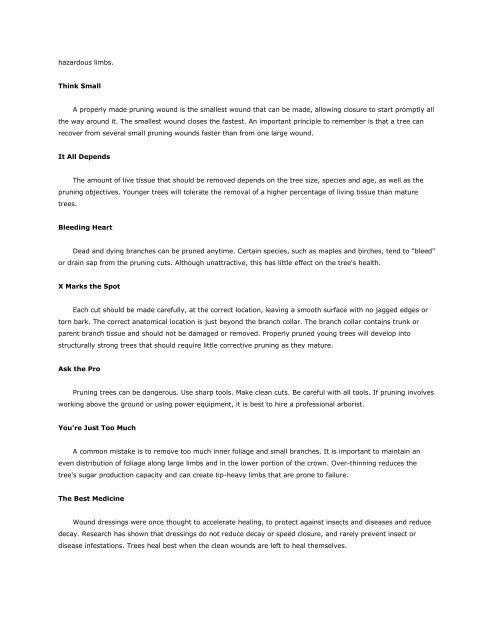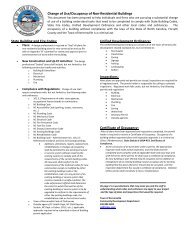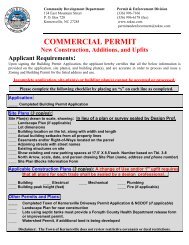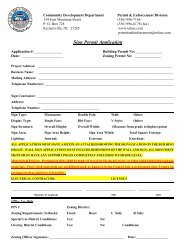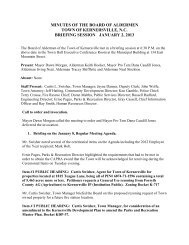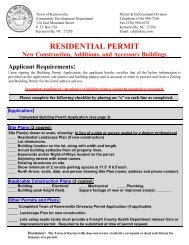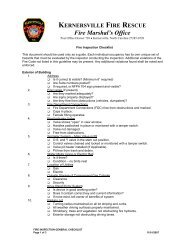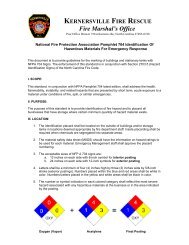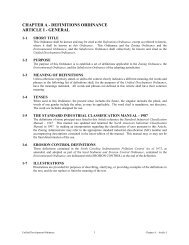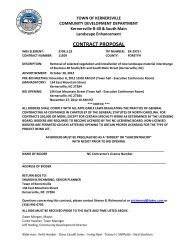Tree Maintenance - 52 Things You Can Do for Your ... - City of Durham
Tree Maintenance - 52 Things You Can Do for Your ... - City of Durham
Tree Maintenance - 52 Things You Can Do for Your ... - City of Durham
Create successful ePaper yourself
Turn your PDF publications into a flip-book with our unique Google optimized e-Paper software.
hazardous limbs.<br />
Think Small<br />
A properly made pruning wound is the smallest wound that can be made, allowing closure to start promptly all<br />
the way around it. The smallest wound closes the fastest. An important principle to remember is that a tree can<br />
recover from several small pruning wounds faster than from one large wound.<br />
It All Depends<br />
The amount <strong>of</strong> live tissue that should be removed depends on the tree size, species and age, as well as the<br />
pruning objectives. <strong>You</strong>nger trees will tolerate the removal <strong>of</strong> a higher percentage <strong>of</strong> living tissue than mature<br />
trees.<br />
Bleeding Heart<br />
Dead and dying branches can be pruned anytime. Certain species, such as maples and birches, tend to "bleed"<br />
or drain sap from the pruning cuts. Although unattractive, this has little effect on the tree's health.<br />
X Marks the Spot<br />
Each cut should be made carefully, at the correct location, leaving a smooth surface with no jagged edges or<br />
torn bark. The correct anatomical location is just beyond the branch collar. The branch collar contains trunk or<br />
parent branch tissue and should not be damaged or removed. Properly pruned young trees will develop into<br />
structurally strong trees that should require little corrective pruning as they mature.<br />
Ask the Pro<br />
Pruning trees can be dangerous. Use sharp tools. Make clean cuts. Be careful with all tools. If pruning involves<br />
working above the ground or using power equipment, it is best to hire a pr<strong>of</strong>essional arborist.<br />
<strong>You</strong>'re Just Too Much<br />
A common mistake is to remove too much inner foliage and small branches. It is important to maintain an<br />
even distribution <strong>of</strong> foliage along large limbs and in the lower portion <strong>of</strong> the crown. Over-thinning reduces the<br />
tree's sugar production capacity and can create tip-heavy limbs that are prone to failure.<br />
The Best Medicine<br />
Wound dressings were once thought to accelerate healing, to protect against insects and diseases and reduce<br />
decay. Research has shown that dressings do not reduce decay or speed closure, and rarely prevent insect or<br />
disease infestations. <strong>Tree</strong>s heal best when the clean wounds are left to heal themselves.


